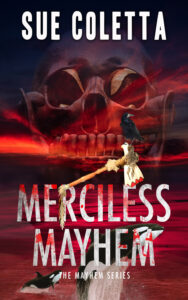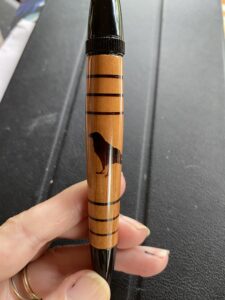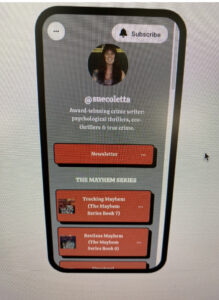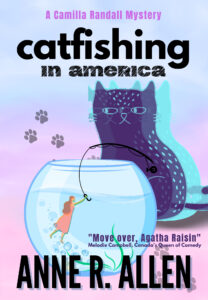In the comments of my post about fear, Dale suggested I write about anger, another powerful emotion with a physical response within the body. We associate anger as a negative emotion. If well-managed, anger can motivate us to make positive changes. The same holds true for our characters.

Most emotions begin inside two almond-shaped structures in our brains called the amygdala. The amygdala is the part of the brain responsible for identifying threats to our well-being, and for sending out an alarm when threats are identified.
It’s so efficient at warning us that it can cause us to react before we’re able to confirm whether our response is warranted. Thought and judgment stem from the prefrontal cortex (behind the forehead), which tends to lag behind the amygdala.
In other words, our brains are wired to influence us to act before we can consider the consequences of our actions. This is not an excuse for behaving badly—people can and do control their anger. Rather, it means managing anger is a skill, not something we instinctually know how to do.
Case in point: Teenagers. 😉
Fun fact: The human brain takes twenty-six years to fully develop. This should help you stay sane when kids lash out or talk gibberish. They’re not working with a full deck yet!
What happens within the body when we’re angry?
Like fear, anger triggers the body’s fight-or-flight response. The adrenal glands flood the body with stress hormones, such as adrenaline and cortisol. The brain shunts blood away from the gut and toward the muscles to prepare for physical exertion.
This results in:
- Faster heart rate
- Rising blood pressure
- Breathing increases and/or shallows
- Rising body temperature
- Increase of perspiration
Meanwhile, the sympathetic nervous system — a division of the nervous system responsible for the fight-or-flight response — nudges the adrenal gland, encouraging it to release epinephrine (aka adrenaline), noradrenaline, and other energy hormones.
When we’re angry our muscles tense. Inside the brain, neurotransmitter chemicals known as catecholamines are released, causing a burst of energy that can last several minutes to hours. This burst of energy explains why our first reaction is to take immediate action.
In addition to the above list, the face flushes as increased blood flow enters the extremities to prepare for physical action. Attention narrows and locks onto the source of rage or innocent target, if misplaced. Additional neurotransmitters and hormones release, which trigger a lasting state of arousal.
The body is now ready to fight.
Quick story to illustrate anger.
As I mentioned in a previous post, I’m a chilled person by nature. My blood pressure rarely, if ever, rises above 110/60. It’s tough to get me angry because I do not allow others to control my emotions. There’re only two ways to push my buttons—abuse of animals or children. If you tick one of those boxes, look out. I’m coming for you.
Now, I’ll tell you the story. 🙂
A few weeks ago, I’m editing Merciless Mayhem at my desk, when four husky guys huddled around the side of the road, bordered by woods.
Huh. That’s odd. Why are they here?
I get back to work but keep the strangers in my peripheral.
One of the guys jumps forward and kicks something on the ground.
What the—? Now they’ve got my full attention.
Over and over, this dude kicks. Laughs with his buddies. Kicks again. Another guy squats. When he rises, he has two hooves gripped in one hand, holding a dead deer by the legs while his buddy kicks and punches the carcass.
Unable to trust to my eyes, I jolt to my feet. All four guys find it hilarious to beat a young deer who lost its life.
Heat envelopes me from the inside out. My face flushes. Blood pressure spikes, and I careen out the door. “Hey!”
They stop, turn. The kicker said, “What?”
“Stop abusing that animal!”
“What’s the big deal, lady? It’s dead.”
“Oh, I see.” In seconds, I shorten the distance between us. “So, when you die, I can kick the sh*t outta your corpse? Leave now, or I’m gonna make that happen a lot sooner than you think.”
All four booked it to their SUV, parked around the corner.
Two hours later, my husband strolls through the door after work. “Hey, honey. Have a good day?”
Boom. All the same biological/physiological responses flood my system, and I’m reliving the incident while I recount the story.
“How many guys?” he said.
“Four.”
“And that didn’t give you pause?” He asked because I’m only 5’ 1.5” Doesn’t matter. It’s the fire that burns inside you, and mine was blazing hot.
“No. Why, should it?”
“Honey, they were probably hunters—with guns.”
“And?”
“You could’ve been shot.”
“And?”
“You could’ve been killed.”
“Oh, well. I will never allow anyone to abuse an animal, dead or alive, in front of me. I don’t care who they are.”
See how easily anger can spiral out of control? Hours after the incident, it didn’t take much to trigger me again.
Tips to Show Anger
Anger can build over time or occur in a split-second. If I were writing the above story in a novel, I’d slow it down. Show in detail the motivation that sparked rage in the MC. Drag out an inferno building inside the MC before she snaps.
Body cues include:
- Flared nostrils
- Sweating
- Head up, chin and chest out, shoulders back
- Audible breath
- Flexed muscles
- Vein or artery pulsing, thinning the skin
- A fighter’s stance
- Cold stare and all its variants
- Face reddening (If the POV character is angry, they can’t see the color of their face)
- Tightness of the eyes, chest, lips, etc.
- Punching, kicking, throwing things
- Teeth or jaw grinding
- Hurtful words, sarcasm, swearing
- Heart thundering
- Muscles quivering against the surge of adrenaline
- Irrationality
- Jumping to the wrong conclusion
Trigger the Senses
Using my story as the example…
Did tree limbs obscure my view? (sight)
Did each kick boomerang across the road? (sound)
Did the metallic sweetness of blood assault the back of my throat? (taste) Or was the carcass rotting? (smell)
When I booked it across the street, did the cold asphalt sting my bare feet? (touch)
We already know hearing is impaired by biological changes. How does the impairment affect the MC? Do muffled sound waves heighten other senses? Or is the MC always a hothead?
Prolonged Effects of Anger
- Headaches
- Lower immune system
- Digestive problems
- Heart disease
- Depression
- Tingling sensation—muscle tension
- Heart palpitations
- Increased risk of stroke
- High blood pressure
- Fatigue
- Ulcers
- Muscle soreness
- Jaw pain
Are you a hothead or chilled? Where is your line in the sand? Meaning, what triggers your anger?

 Last night, my husband and I went to a pumpkin festival with another couple. The town blocks off downtown’s main drag, and skeletons, witches, monsters, live music, and laser shows filled the streets.
Last night, my husband and I went to a pumpkin festival with another couple. The town blocks off downtown’s main drag, and skeletons, witches, monsters, live music, and laser shows filled the streets. .
.

 Shawnee and Mayhem continue to wreak havoc on the Killzme Corporation — the largest animal trafficking ring in the country — by killing one poacher at a time. The stakes grow increasingly higher when the nefarious group retaliates by putting a bounty on their heads.
Shawnee and Mayhem continue to wreak havoc on the Killzme Corporation — the largest animal trafficking ring in the country — by killing one poacher at a time. The stakes grow increasingly higher when the nefarious group retaliates by putting a bounty on their heads. I recently had a reader comment, “I noticed most of your characters are tea drinkers. Is that because you are?”
I recently had a reader comment, “I noticed most of your characters are tea drinkers. Is that because you are?”
 Check out the amazing “Poe Pen” Steve created for monthly giveaways for
Check out the amazing “Poe Pen” Steve created for monthly giveaways for 

 Anne R. Allen is a popular blogger and the author of the bestselling Camilla Randall Mysteries as well as the Boomer Women Trilogy and the anthology Why Grandma Bought that Car (Kotu Beach Press.) Her most recent mystery is Catfishing in America (Thalia Press) a comic look at romance scams. Her mystery The Gatsby Game is being published in French at the end of this month. Anne’s nonfiction guide, The Author Blog: Easy Blogging for Busy Authors, is an Amazon #1 bestseller that was named one of the 101 Best Blogging Books of All Time by Book Authority. She’s also the co-author, with Catherine Ryan Hyde, of the writer’s guide How to Be a Writer in the E-Age. She blogs with NYT million-copy seller, Ruth Harris, at “Anne R. Allen’s Blog…with Ruth Harris.” You can find them at
Anne R. Allen is a popular blogger and the author of the bestselling Camilla Randall Mysteries as well as the Boomer Women Trilogy and the anthology Why Grandma Bought that Car (Kotu Beach Press.) Her most recent mystery is Catfishing in America (Thalia Press) a comic look at romance scams. Her mystery The Gatsby Game is being published in French at the end of this month. Anne’s nonfiction guide, The Author Blog: Easy Blogging for Busy Authors, is an Amazon #1 bestseller that was named one of the 101 Best Blogging Books of All Time by Book Authority. She’s also the co-author, with Catherine Ryan Hyde, of the writer’s guide How to Be a Writer in the E-Age. She blogs with NYT million-copy seller, Ruth Harris, at “Anne R. Allen’s Blog…with Ruth Harris.” You can find them at  The rhetorical triangle is a concept that rhetoricians developed from the Greek philosopher Aristotle’s idea that effective persuasive arguments contain three essential elements: logos, ethos, and pathos.
The rhetorical triangle is a concept that rhetoricians developed from the Greek philosopher Aristotle’s idea that effective persuasive arguments contain three essential elements: logos, ethos, and pathos.